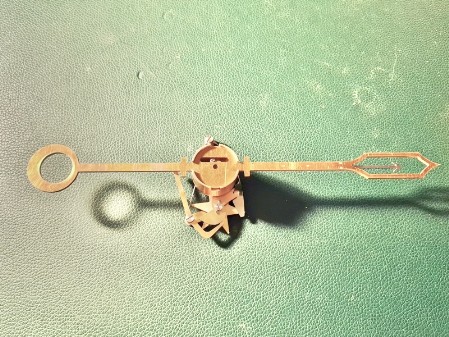Roentgen & Kinzing's "Benjamin Franklin" clock, updated 07.01.2024
Site under construction....
Your assistance in providing any additional information would be greatly appreciated.
Introducing an exciting new project set to commence June 2023 in collaboration togehter with Dieter Schiller, the digitizing and building a remake of a Roentgen & Kinzing Benjamin Franklin type clock. This ambitious endeavor aims to revive the ingenuity and craftsmanship of the renowned clockmaker Peter Kinzing, as he pay homage to the visionary Benjamin Franklin.
The process of digitizing and rebuilding this clock will involve extensive research, careful analysis of existing historical records, and collaboration with experts in the field of horology. Advanced imaging techniques and modern manufacturing methods will be employed to recreate the intricate components and mechanisms that bring this clock to life.
Through this project, we aim to preserve the legacy of Roentgen, Kinzing, and Franklin, while showcasing the fusion of traditional craftsmanship with contemporary technologies.
As the project embarks on this exciting journey, we look forward to uncovering the secrets and intricacies of this historical timepiece, and ultimately sharing its beauty and innovation with enthusiasts, historians, and admirers of horological wonders.
When visiting Neuwied, I highly recommend taking the time to explore the Roentgen & Kinzing Museum. It promises an enriching experience worth your while.
From 1784, or possibly even earlier, several clockmakers began producing three-wheel clocks based on the design of Benjamin Franklin. These clocks were distinguished by their high quality, complications, and precise pendulums. Among the manufacturers involved in the development of the original hand adjustment mechanism were Kinzing and Röntgen. Additionally, there are similar clocks with enhancements by Jakob Klug, as well as creations by Reichel from Köstritz, Kaderhand, Anton Rötig and Baumgärtner. Joseph Weidenheimer, a clockmaker from Mainz, also made clocks with calendars and other complications during this period. Due to this variety, it is challenging to attribute a specific version of the adjustment mechanism to a particular clockmaker.
For more information visit the following site with Ian Fowlers article about Franklin clocks:
In the project, my responsibility involves digitizing the clock based on historical data, drawings, and photos, utilizing Autodesk Fusion 360 software. Additionally, I am tasked with creating technical drawings. This process will encompass digitizing the tools required for crafting specific components, as originally fashioned by Dieter Schiller.
I would like to express our heartfelt gratitude for the tremendous support you all have provided us. Your assistance has been invaluable and has made a significant impact on our journey.
Bernd Willscheid, Roentgen Museum, Neuwied
Ian D. Fowler, Friesenhagen
Here are a few helpful links for your reference:
Dieter Schiller's adept craftsmanship marks the beginning of skillfully crafting components.

The interpretative development of the hand adjustment mechanism is ongoing.
Stay tuned for more to come...
